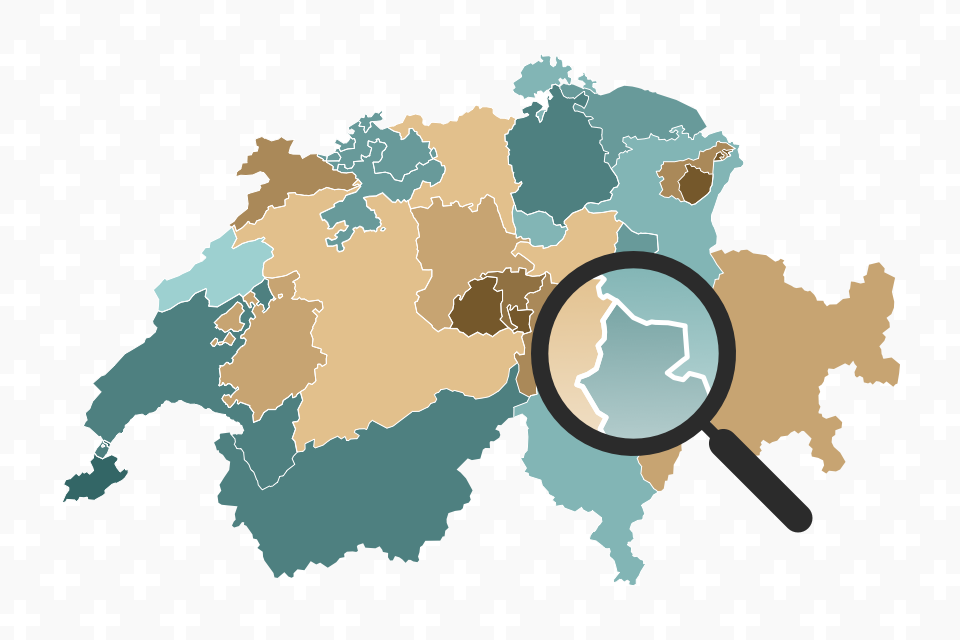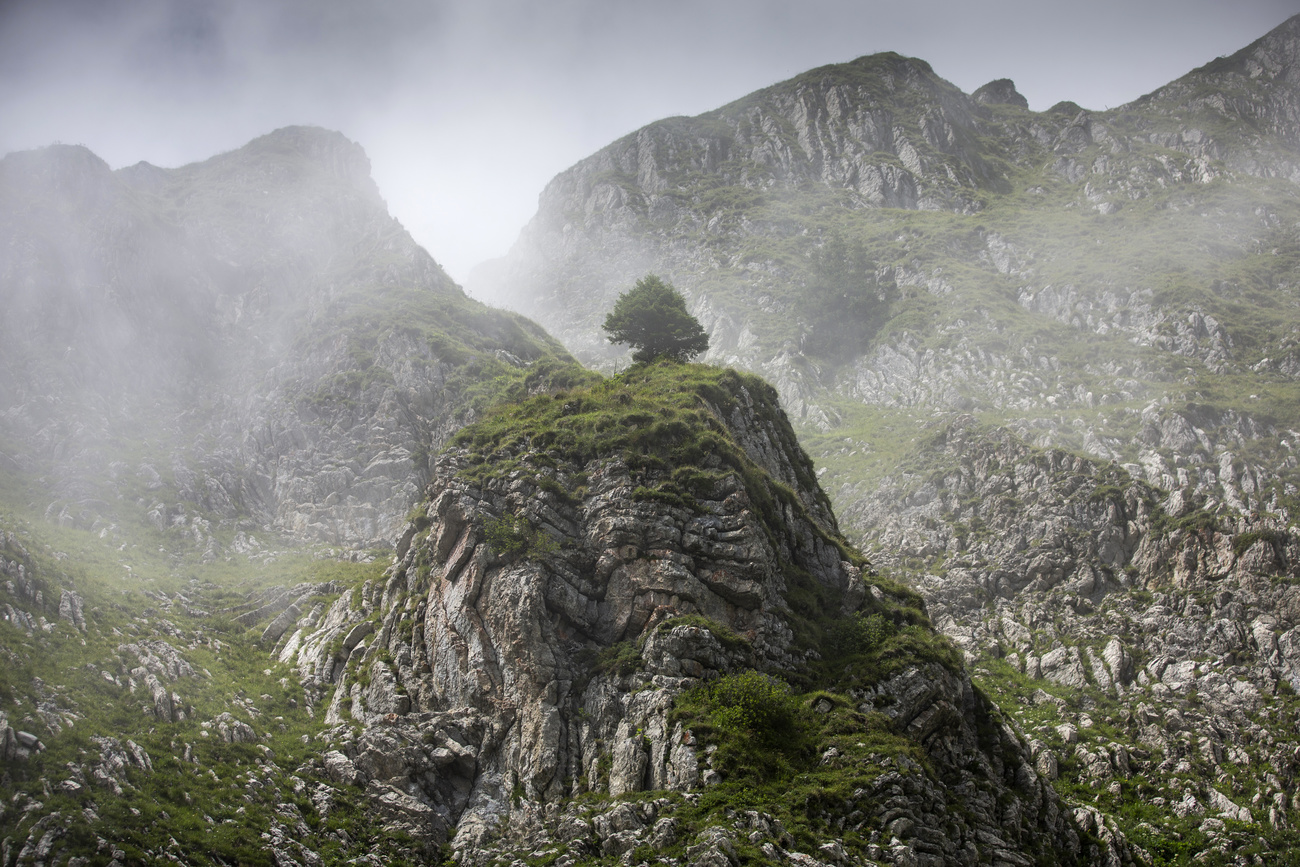How free movement impacts the Swiss economy

European immigration to Switzerland on the whole meets the needs of the labour market, and scrapping free movement would cost the economy dearly, various studies show.
“Moderate” immigration without free movement: this is what the right-wing Swiss People’s Party says it wants to achieve with its popular initiative, which comes before voters in September. The initiative calls for the repeal of the agreement on the free movement of persons and making it impossible for any new treaties to be concluded that grant a similar arrangement for foreign nationals in Switzerland.
A full 20 years after the agreement was signed, its critics question the economic benefits of free movement for Switzerland. The data presented below helps to shed some light on the actual impact European workers have had on the Swiss labour market.
The agreement on the free movement of persons, signed by Switzerland and the European Union on June 21, 1999, made it easier for citizens from the EU and the European Free Trade Association (EFTA) to live and work in Switzerland. The agreement entered into force on June 1, 2002, and was extended in 2006, 2009 and 2017 to the nationals of new EU member states.The right to free movement is complemented by the mutual recognition of diplomas, the right to buy property and the coordination of social security systems.
What effect has free movement had on immigration?
The agreement has led to an increase in immigration of citizens from EU and EFTA countries. In 2002, when the agreement came into force, there were less than 900,000 nationals from these areas living in Switzerland. Their number has since risen by nearly 60%, to 1.4 million people.
Switzerland is the European country with the second highest proportion of EU/EFTA nationals in its working population (nearly 20%), after Luxembourg. Meanwhile, the number of cross-border commuters working in Switzerland more than doubled between 2002 and 2019, jumping from 162,000 to almost 330,000.
However, net immigration from EU countries – that is, the annual difference between those arriving and those leaving – has waned since 2013 and currently sits at just over 30,000. The migration balance is closely linked to economic trends: economic growth phases tend to come alongside a rise in net migration and vice versa, as noted by the Swiss economics ministry’s observatory on the free movement of people, which published its latest report at the end of June.
Are they taking Swiss jobs?
Work is the main motivation for immigration among the majority of EU/EFTA nationals, which translates to an above-average participation in the labour market. Last year, their employment rate – that is, the proportion of economically active workers calculated by the International Labour Organization (ILO) – stood at 87.7%, compared to an overall average of 84.3%, and 84.6% for Swiss nationals.
Another indicator of integration into the labour market is the unemployment rate. For EU nationals, this rate has evolved since 2012 in step with the economy and remained above the Swiss average (but well below the EU average). The higher concentration of immigrants in sectors more subject to unemployment and/or seasonal fluctuations plays some role in this.
Over the same period, the unemployment rate for Swiss nationals has varied little and remains low.
These indicators have led the observatory to conclude that this immigration “seems to have responded to the needs of the labour market”. It sums up that “there is no evidence that immigration has had a negative impact on the employment prospects of the native population.” On the contrary, European immigrants have helped to make the labour market more flexible.
A number of studies conducted for the State Secretariat for Economic Affairs (SECO) in recent years have examined whether this immigration has had a “crowding-out effect” on the local population. Most agree that this has been practically imperceptible at the overall level, and that foreign labour complements the local workforce rather than competing with it.
Some studies, meanwhile, have identified certain population subgroups that have been slightly penalised, in particular highly qualified people born in Switzerland, according to a report published in 2013.

More
Brexit year could be key for Bern-Brussels relations
Are EU/EFTA immigrants more or less skilled?
According to this report, highly qualified European immigrants “can replace people living in Switzerland with the same level of education”, but this is compensated for at the macro-level as they can also “create jobs for others who are less qualified.”
The proportion of people with a higher education is significant among EU/EFTA workers, but, at the other end of the spectrum, a quarter of them have only completed compulsory schooling.
The observatory on the free movement of persons considers that these different education levels meet the needs of the economy: highly qualified immigration “has helped contribute to the structural transition of the Swiss economy towards activities with a high added value”, while for low-skilled jobs shunned by the Swiss, “businesses meet their staffing needs by resorting primarily to EU/EFTA workforce.”
Has immigration driven down wages?
Several studies carried out between 2010 and 2013, mainly commissioned by the SECO, noted an impact on the wages of certain occupational groups, but their conclusions varied. Some researchers observed pressure on the salaries of the highly qualified, while others found that wage limits had mostly affected the less skilled. One study concluded that immigration had led to wage growth, particularly among the highly skilled, while another observed no statistically significant effect of immigration on wages.
In any event, the median salary for Swiss nationals and all foreigners (breakdown for EU/EFTA countries not available) increased steadily and nearly at the same rate between 2008 and 2018 (+ 0.84% and 0.87% per year, respectively).
The observatory therefore considers that immigration has had “no negative impact” on overall wage trends.
What would ending free movement cost the Swiss economy?
After the Swiss People’s Party initiative “against mass immigration” was accepted on February 9, 2014, prompting the authorities to fear that the agreement on free movement would be challenged, the SECO commissioned two studies to assess the long-term economic consequences of such a scenario.
These reports, published in 2015, found in particular that the growth in the labour force brought about by the agreement had led to both a rise in the productive potential of the economy and an overall increase in demand, thereby favouring growth.
Economists are unanimous: ending free movement would cost Switzerland dearly. By 2035, they warn, the country’s GDP would be 3% to 4% lower and foreign trade weakened. The income of the working population, for its part, would shrink by nearly CHF400 million ($438.4 million).
Translated from French by Julia Bassam

More
Why Swiss voters will decide again on EU immigration
Translated from French by Julia Bassam

In compliance with the JTI standards
More: SWI swissinfo.ch certified by the Journalism Trust Initiative












Join the conversation!